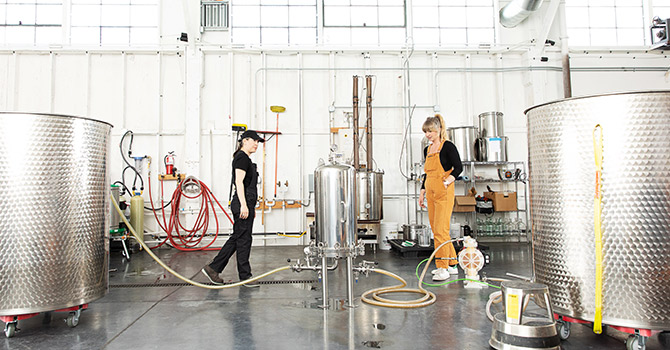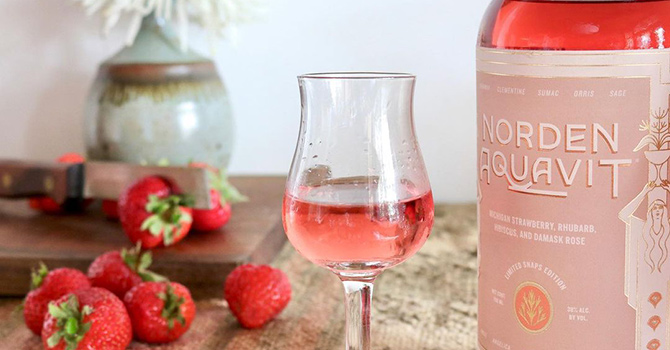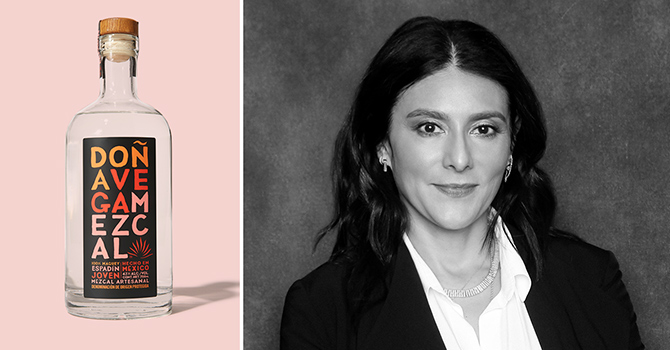Now that the world is over a year into a global pandemic, evaluating the residual effects in order to plan for the future is slowly becoming a bit easier for craft spirits companies. As restaurants permanently shuttered by the thousands — approximately 110,000, according to Business Insider — alcohol beverage companies shifted their sights to almost exclusively off-premise sales. This put spirits in a relatively stronger position to weather the economic fallout, compared to other segments like craft beer, who largely relied on on-premise sales pre-pandemic.
Pre-existing off-premise positioning boosted craft spirits’ chances, but an increase in demand also helped the industry thrive. Alcohol e-commerce platform Drizly recently reported that wine, their longtime sales segment leader, was replaced for the first time by liquor, and that demand shows no sign of slowing. A number of craft spirits companies even launched during the pandemic, and many of these new entries have seen early success.
New Brands See Surprising Progress
Fast Penny Spirits, an Amari company based in the Pacific Northwest, had been in the works since August 2017, and in early 2020, co-founders Jamie Hunt and Holly Robinson were ready to officially launch. But as the entire world shuddered to a halt, the pair was forced to adjust their rollout for a chance at survival. “Our [original] goal was to get distribution, go from there, and then take a year or two and build out a space where we could do tastings,” says Hunt. “But with COVID, we had to shift our plans from distribution to direct to consumer and self distribution in Washington.”
Self distribution became a necessity early on, Hunt explains, due to distributor hesitancy to bring on new spirits into their portfolios. With that unexpected addition of labor on top of production, sales, and marketing, the early days were extremely challenging. But despite the difficulties, both founders describe a surprising reception from consumers willing to try their product even without that initial in-person connection. “Getting them [consumers] to buy into the brand without us being present and talking to them is pretty challenging, but it’s happening,” says Robinson. She points to strategic relationships with partners like web-based wholesale distributor LibDib as well as social media channels as godsends during this growth period. “I think social [media] during the pandemic has saved a lot of small brands, if not built them,” she says.
Another spirits company, ReBru Spirits in San Diego, California, had also been in the planning stages for several years before formally entering the market in fall 2020. Inspired by the plethora of breweries across the county (over 150 and counting), ReBru was created to help address and minimize brewery waste by taking expired beer that would otherwise have to go down the drain and turning it into craft spirits like gin and vodka. “Our business model — taking beer destined for the drain and upcycling it into top-shelf spirits — was put to the test when every bar in California was forced to close their doors,” says Alyssa Newman, marketing manager for ReBru.
The initial shutdown led to a massive (and unexpected) surplus of draft beer sitting in lines across the state, which put ReBru into production overtime. “We were distilling this wasted beer 24/7,” says Newman. “It’s almost odd how appropriate the timing was for this exact issue for us. That is not to say it didn’t come without struggle, but we were definitely ready for what the pandemic had to offer in terms of unsellable beer.” She goes on to say they have processed over 1.5 million pints of beer formerly destined for landfills, and that number increases with each batch.
How Existing Brands Shifted Towards Success
The fortuitous timing for acquiring huge quantities of discarded alcohol, coupled with an increase in consumer demand for sustainability-focused brands, also helped boost existing craft spirits companies’ chances at longevity. At the start of the pandemic, sudden demand for hand sanitizer led many companies like Black Button Distilling in Rochester, New York to shift focus from spirits to sanitizer.
“Here at Black Button Distillery, we have not only survived by making over 400,000 bottles of hand sanitizer, but we have thrived by pivoting our marketing and sales efforts into areas that allowed us to grow our spirits business by over 7 percent,” says Carrie Riby, marketing director for Black Button. She cites moves like entering new ecommerce channels and launching a new canned cocktail line as pivotal steps for their company. Ready-to-drink (RTDs) like Black Button’s line, dubbed CanBee, have exploded in popularity even before the pandemic, strongly positioning them for survival even after the long shutdown.
Other craft spirits companies took the opportunity to nurture relationships in a way they were unable to pre-pandemic. Norden Aquavit in Michigan began distributing in 2018 and quickly earned local and national recognition, including winning Double Gold in the 2019 San Francisco World Spirits Competition. Robyn Cleveland, president and distiller at Norden Spirits, LLC, says their brand grew 42 percent in 2020 from the previous year, thanks to strategic outreach to existing retailers as well as directly to consumers through social media. Additionally, she lobbied the state to pass legislation allowing to-go alcohol sales and delivery from local bars and restaurants — an effort aimed at helping her entire community survive. “The initiatives I was fighting for were to benefit the industry I love,” she says. “Bar owners and beverage directors took note of my efforts and responded by featuring our brand in to-go cocktails, which really helped us weather the uncertainties of 2020. We responded to their kindness with another gesture and began supplying bottles (at cost) for cocktails through bulk purchasing and warehousing at our production facility.”
Tips For Future Growth
One of the things the duo at Fast Penny cite as a major selling point is their compelling brand story. “We lean hard on being woman-owned,” says Robinson. “At first we weren’t doing that, but it was something that folks really enjoyed hearing, and when you’re going to a small independent retailer, that’s the story they’re telling.”
Doña Vega, which launched in late 2019 by founder Sonya Vega, is another craft spirits company that’s one of the few woman-owned, nationally distributed mezcal brands in the United States. Thanks to Vega’s strong ties to her all-female family of producers in Oaxaca, Mexico — who have been making mezcal for five generations — Doña Vega is slated to enter several new states at the start of Q2 2021, and it’s all part of the brand story Vega tells to new retailers as well as potential consumers. But while studies show the majority of Americans value diversity in advertising (especially Millennials), motivation to buy also extends to sustainable business practices.
The Wine Institute reports Millennials as well as Generation Z continue to specifically seek out brands committed to sustainable business practices, and are willing to pay for it. Prioritizing sustainability through recycling, charitable giving, and ethical agriculture comes at a cost, but can provide tremendous value to craft spirits companies. “From the very beginning, the thing that really ties people to our story is our giveback program,” explains Fast Penny’s Hunt. “We instituted a giveback program from day one: it’s 3 percent of the bottle sales go to various nonprofits that empower women in the community and industry that we’re in.” Robinson adds that they plan to continuously tweak and improve their sustainability initiatives as well as their support of other women in the industry. “This past year, obviously, has impacted everyone,” she says. “It has really solidified our reasoning behind wanting to do what we’re doing.”
How Consumers Can Help Their Favorite Brands Survive
Consumers sharing product pictures, stories, and recipes on social media remains hugely helpful for building brand trust. “Sharing our posts or recommending us to your online social circle is worth so much more than you think,” says Lauren Myerscough, co-founder/CEO of Cocktail & Sons and VP of Sales and Marketing at Sidewalk Side Spirits. Hunt agrees. “It gives us more exposure when consumers get our product to make cocktails and take pictures and share on Instagram, Facebook, or whatever social channel,” she says. “That really helps expose our brand further and get others interested in purchasing.” Consumer reviews can massively boost sales, and with social media usage increasing (especially during the pandemic), it’s a quick, trusted way for consumers to help their favorite craft spirits brands stay in business.
Asking for specific products in your local retailer is also an easy and helpful method for introducing new craft spirits brands to your local market. “The biggest thing that people can do is request the product by name,” explains Robinson. “Just continue to request it and share the demand for that with buyers, because right now, the future of these smaller companies like ours is in their hands. If they don’t purchase our products, that’s kind of the end of it.” With this type of support behind their efforts, even as the pandemic continues its slow recession, craft spirits companies have reason to feel optimistic.


